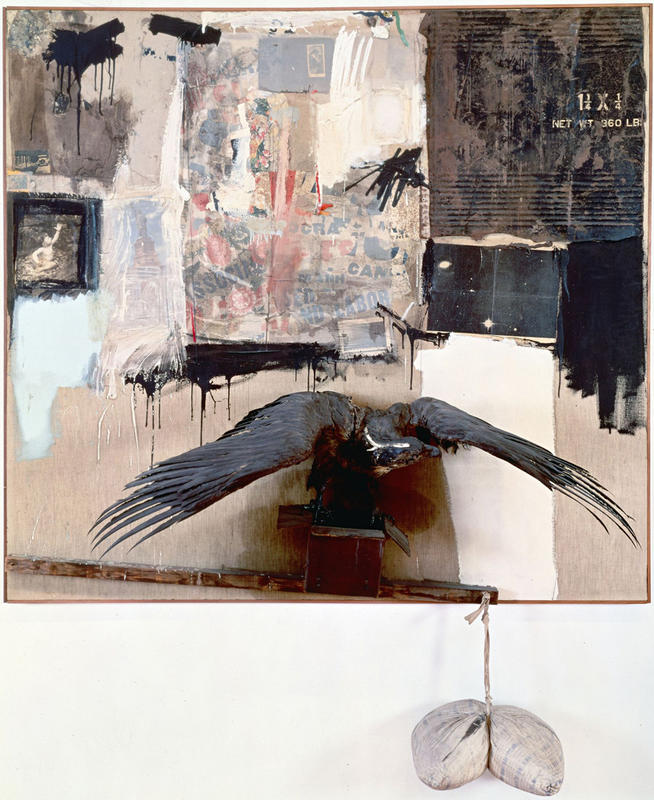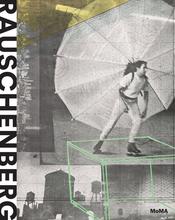More about Canyon
- All
- Info
- Shop

Contributor
Canyon may look like a half-assed attempt at a collage, but it's actually one of Rauschenberg’s most important gifts to the history of art.
This collage is actually known as a "combine." Rauschenberg would take items from everyday life, slap 'em on a canvas, smother it with some paint, and call it art. The expression “one man’s trash is another man’s treasure” has never rung more true, Rauschenberg had a propensity towards trash and a real knack for making valueless junk worth millions. Rauschenberg’s dumpster diving days began in college when it was his job to take all the trash out for his forward thinking school, The Black Mountain College. He began rifling through the trash, looking for interesting objects, and ultimately decided to incorporate the garbage into his art...thus the combine was born! While it may seem a little silly, and most definitely unhygienic, it was about to become oh-so-hot in the posh art world.
While Canyon showcases a variety of items from a collared shirt to a photo of his son, probably the most noticeable item is the stuffed bald eagle protruding out of the bottom of the canvas. While the image of an eagle may evoke feelings of patriotism or freedom for some, for the IRS it symbolized an opportunity to rake in the cash.
The Migratory Bird Treaty Act of 1918 and the Bald Eagle Protection Act of 1940 make it illegal to buy, sell, barter, or possess a bald eagle in the United Stales, thus making it illegal for the owner, Ileana Sonnabend, to sell or own this piece of art. Luckily, Rauschenberg had provided a notarized statement saying the bird had been stuffed by one of Roosevelt’s Rough Riders before the law's passage and therefore Ileana could continue to hold on to the combine. Although she was able to keep it, she still couldn't sell it, making this masterpiece essentially worth bupkis.
Upon her death, she left her estimated $1 billion dollar art collection to her family. At this point, the bird snagged the attention of the IRS once again when they gladly sent a report to her family, appraising Canyon at $15 million. When they rejected this claiming that the art was worthless, the government upped the ante and increased the appraisal to $65 million, which yielded a $29.2 million tax bill. Understandably, the family was not excited about paying the taxes on a piece of art valued at zero, so they settled the dispute with the IRS by donating this piece to the MoMA. Sucks for the family, but at least the work now resides in an amazing public art collection where the troublesome bird can be appreciated by all.
Featured Content
Here is what Wikipedia says about Canyon (Rauschenberg)
Canyon is a 1959 artwork by American artist Robert Rauschenberg. The piece is one of his most celebrated and best known works, and is one of his Combines. Rauschenberg coined the phrase Combine in 1954 to describe his artworks that incorporate elements of both sculpture and painting. Canyon includes a taxidermied golden eagle and a pillow, along with other sculptural elements mounted on a painted and collaged canvas.
Canyon was subject to an ownership controversy after the death of its owner, Ileana Sonnabend. This was due to the work’s inclusion of an endangered species: the taxidermied golden eagle. According to U.S. law, Canyon could never be sold because of the 1940 Bald and Golden Eagle Protection Act and the 1918 Migratory Bird Treaty Act. The prohibition of its sale ultimately resulted in the work’s donation to the Museum of Modern Art in 2012.
Check out the full Wikipedia article about Canyon (Rauschenberg)

















